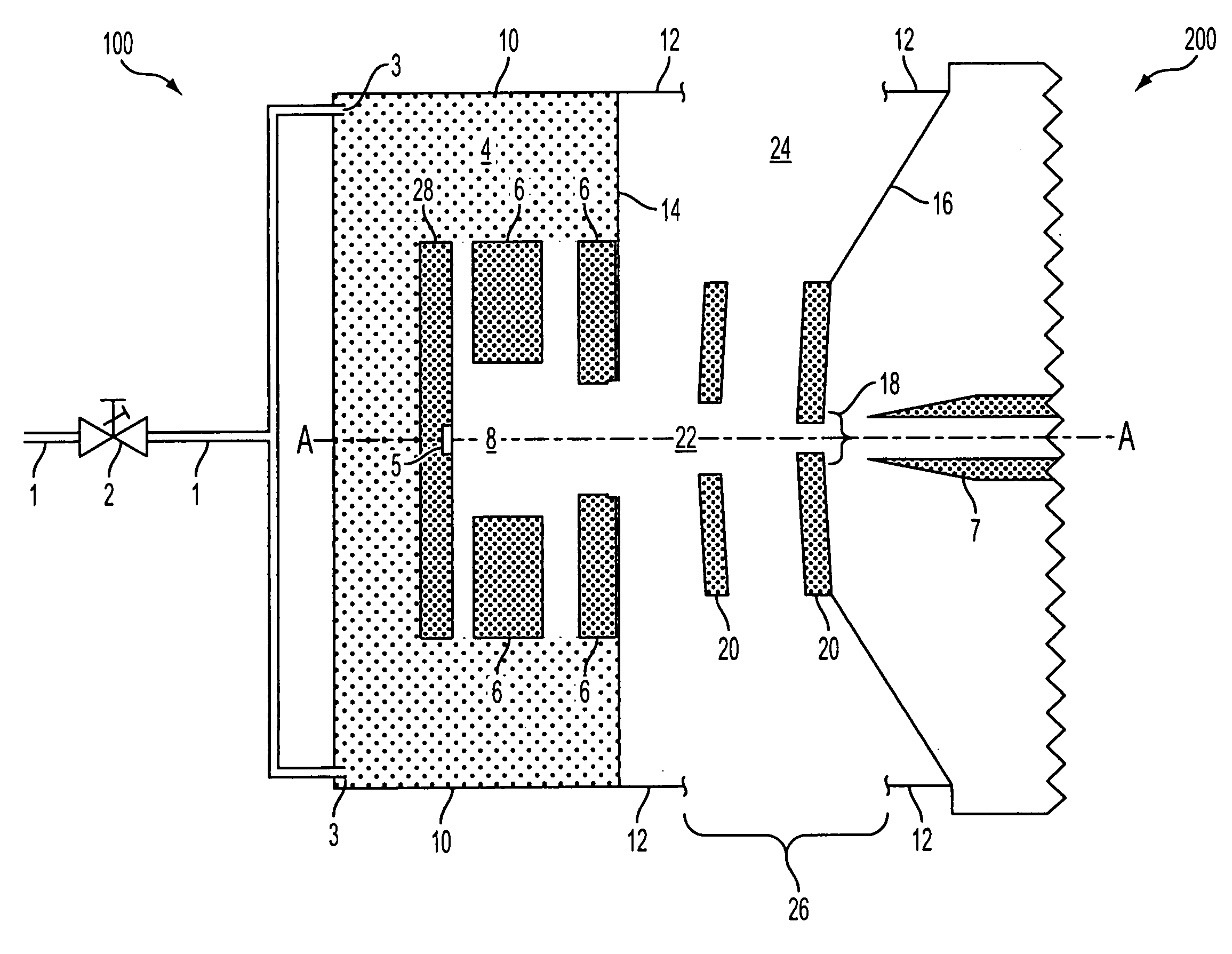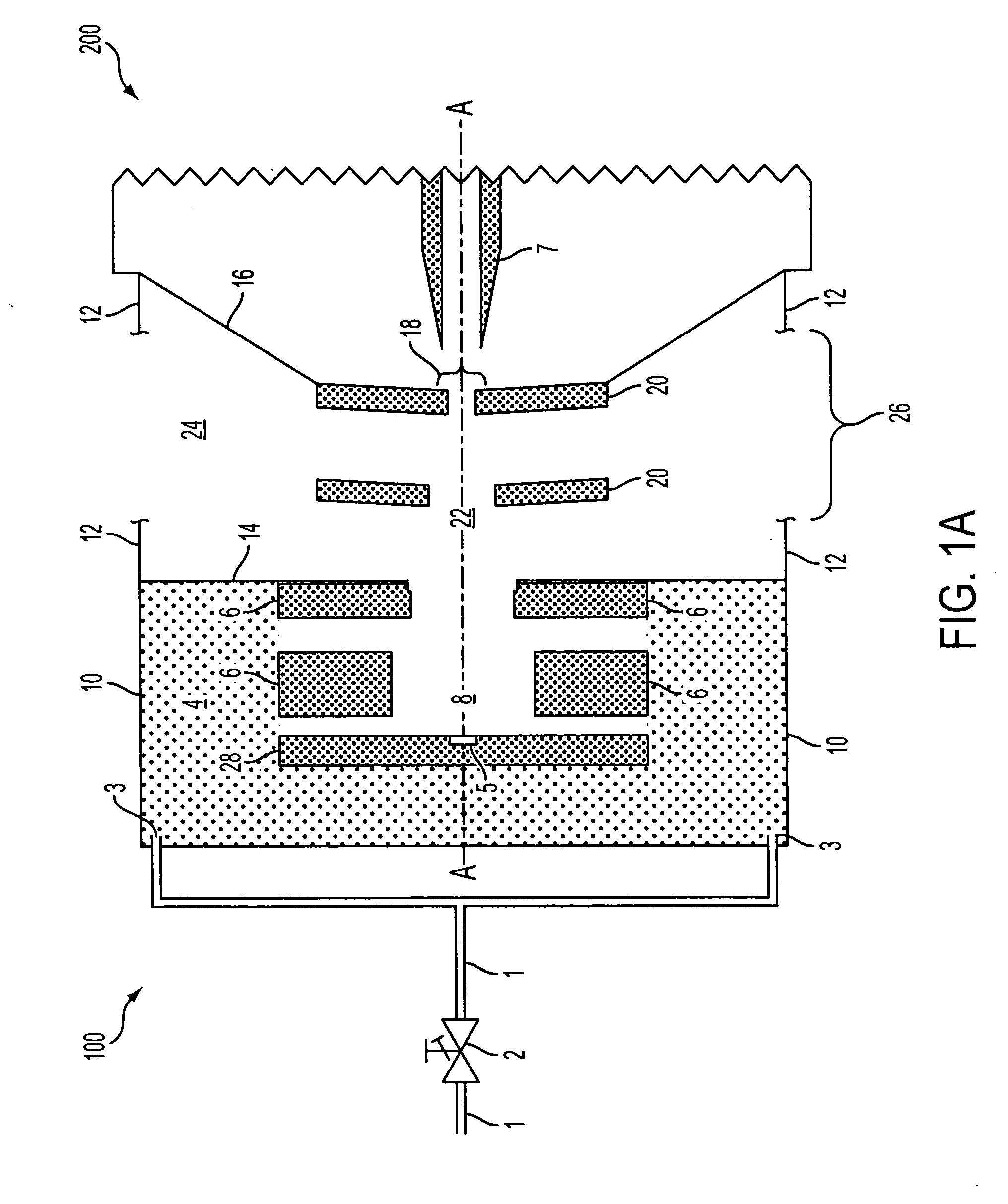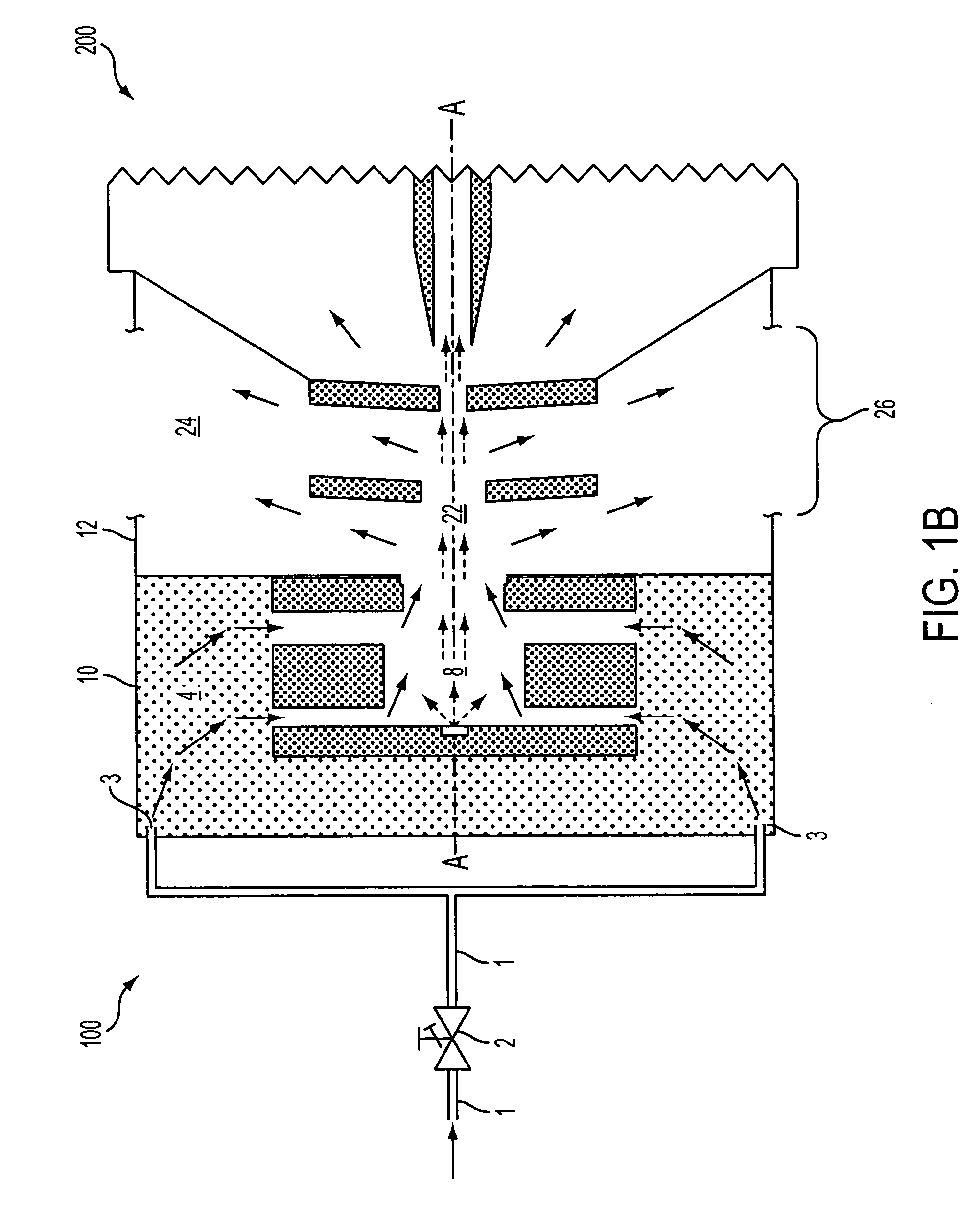Methods and apparatus for ion sources, ion control and ion measurement for macromolecules
a macromolecule and ion source technology, applied in the field of chemical and biochemical analysis, can solve the problems of inability to fully realize the full range of ion sources, the complexity of combinatorial investigations, and the negative influence of purification methods on ionization efficiency, so as to improve the sensitivity of the system, increase the total sample ionization efficiency of the ion source, and high resolution
- Summary
- Abstract
- Description
- Claims
- Application Information
AI Technical Summary
Benefits of technology
Problems solved by technology
Method used
Image
Examples
Embodiment Construction
[0256] Aspects of the present invention provide methods, apparatus, systems, processes and other inventions relating to: ion sources with controlled electro-pneumatic superposition, ion source synchronized to RF multipole, ion source with charge injection, optimized control in active feedback system, radiation supported charge-injection liquid spray, ion source with controlled liquid injection as well as various embodiments and combinations of respective elements of some and / or each of the foregoing in additional embodiments.
Ion Sources with Controlled Electro-pneumatic Superposition
[0257] Aspects of apparatus and methods of certain embodiments of the present invention rely upon the controlled superposition of gas flow fields and electrostatic fields within an ion source to effect rapid collisional cooling with improved collection, collimation, and output of ions. The high efficiency injection of unfragmented ions into ion analytical instruments to which the source may be operabl...
PUM
 Login to View More
Login to View More Abstract
Description
Claims
Application Information
 Login to View More
Login to View More - R&D
- Intellectual Property
- Life Sciences
- Materials
- Tech Scout
- Unparalleled Data Quality
- Higher Quality Content
- 60% Fewer Hallucinations
Browse by: Latest US Patents, China's latest patents, Technical Efficacy Thesaurus, Application Domain, Technology Topic, Popular Technical Reports.
© 2025 PatSnap. All rights reserved.Legal|Privacy policy|Modern Slavery Act Transparency Statement|Sitemap|About US| Contact US: help@patsnap.com



